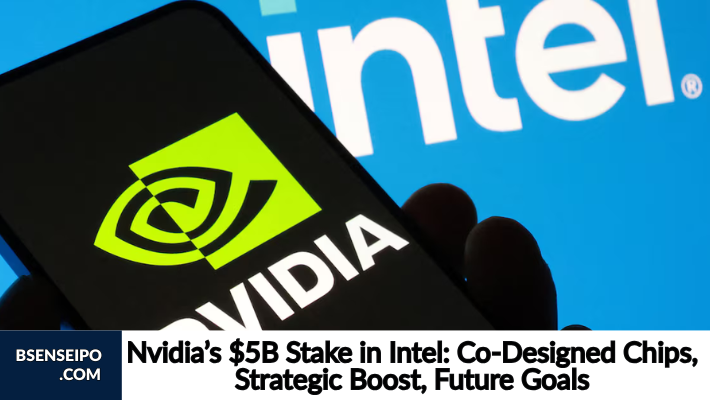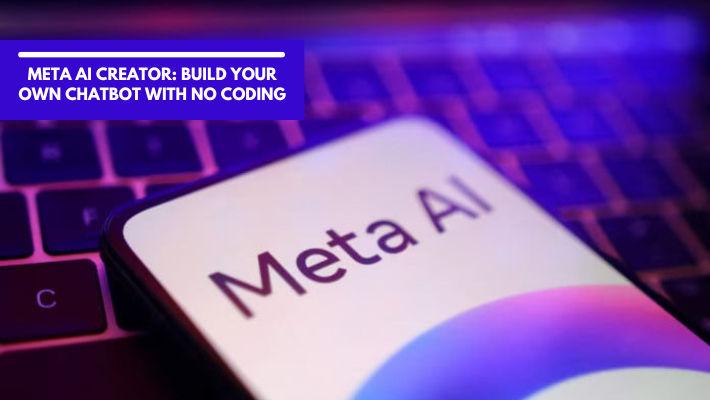Nvidia’s $5B Investment in Intel
Nvidia’s $5B Stake in Intel: Nvidia is investing $5 billion in Intel (≈4% stake) and partnering to co-develop custom CPUs, PC SoCs, and AI/data center chips using NVLink. This article explores the deal, competitive implications vs AMD/TSMC, financial impacts, and where both companies are headed.
Nvidia’s $5B Stake in Intel: By investing $5 billion and teaming up with a rival, Nvidia signals a major shift in chip industry power — reviving Intel and reshaping AI hardware’s future.
Company Background
Nvidia
- Founded in 1993, Nvidia has become a leading name in graphics processing units (GPUs), accelerated computing, and AI infrastructure. Its CUDA platform, GeForce & RTX GPU lines, and recent AI models drive much of the demand.
- Strong presence in data centers, gaming, autonomous systems, AI model training, and inference. Historically, it has been reliant on external foundries (like TSMC) for manufacturing its chips.
Intel
- Founded in 1968, Intel is one of the original giants in CPU (x86) design and manufacturing. For decades, Intel dominated PCs and servers.
- However, in recent years, Intel has faced challenges: delays in advancing process technology, competition from AMD, TSMC, and others; financial losses; pressure in the foundry business; workforce reductions; cost-cutting and restructuring.
What’s the Deal: Key Details
- Investment: Nvidia is investing US$5 billion into Intel by purchasing common stock at $23.28 per share. (Nvidia’s $5B Stake in Intel) That gives Nvidia roughly a ~4% stake in Intel once the deal closes.
- Joint Goals: The collaboration involves co-development of multiple generations of custom CPUs and chips:
- Intel will design custom data-center x86 CPUs that Nvidia will integrate into its AI infrastructure platforms.
- For personal computing, Intel will build PC system-on-chips (SoCs) that integrate Nvidia RTX GPU chiplets. These will rely on Nvidia’s NVLink architecture to enable high-speed interconnects.
- Purchase Price & Market Movement: The share price of $23.28 is at a discount to recent Intel closing prices. After the announcement, Intel shares jumped significantly (20-25% in many reports), while Nvidia shares also rose modestly.
- No immediate foundry commitment: Although Intel has manufacturing capacity, the deal does not (at least not explicitly yet) include Nvidia shifting its current production volumes away from TSMC. Intel’s foundry business remains under pressure, and scaling concerns persist.
How This Gives Nvidia a Competitive Boost
- Closer Control Over Integration: By having Intel build CPUs custom-designed to work with Nvidia GPUs/AI units via NVLink, Nvidia can optimize performance, latency, energy efficiency, etc., in its AI infrastructure. It reduces “friction” in combining separate chips.
- Diversification of Supply Chain / Chips: Nvidia depends heavily on external foundries (like TSMC). With Intel as a partner for CPU + possibly more integration, it gains more flexibility. Also aligns with U.S. government incentives/concerns about domestic semiconductor capacity.
- Strategic Strengthening of Intel: Intel gets capital, market validation, and a path to re-enter strength in AI and high-performance computing, which had been slipping. For Nvidia, this strengthens a key player whose x86 ecosystem is foundational in PC & server markets. Having Intel on more solid ground may help Nvidia in markets (like enterprise, governments) that care about supply resilience.
- Competitive Pressure on AMD, TSMC, Broadcom, etc.: Rivals may face tighter competition. AMD may lose some share in clients who value integrated CPU+GPU solutions with optimized interconnect. TSMC remains very important, but Intel’s revival and this partnership could shift some demand and influence.
Financial Comparison: Nvidia vs Intel (Before the Deal)
| Metric | Nvidia | Intel |
|---|---|---|
| Market Position | Leader in AI/GPU, strong growth; high valuation; strong revenue growth from data center / AI workloads | Established CPU manufacturer but facing delays in process node advancement, mixed financial performance, and higher costs; undergoing restructuring |
| Dependency on Manufacturing | Mostly outsources to TSMC and others; focuses on chip design, GPU/AI architecture | Owns fabs, process technology; heavy CapEx; foundry business struggling; high fixed costs |
| Revenue Streams | Gaming, data center, professional visualization, AI models, automotive etc. | Client computing (PC CPUs), data center CPUs/accelerators, foundry, memory etc., but with shrinking margins in some segments |
Future Goals & Implications
- Launch of Joint Products: Expect in coming years several chips built jointly: data center CPUs + Nvidia GPU integration; PC SoCs with RTX GPU elements integrated. These may come with performance, power, efficiency improvements.
- Intel Process Technology & 14A Node: Intel is working on its 14-Angstrom (14A) process node for 2027. Joint product demand from Nvidia could help provide scale, revenue, and validation for Intel’s future fabs.
- Ecosystem Alignment: Tight integration between Intel’s x86 ecosystem and Nvidia’s AI stack could lead to new platforms that blur the old CPU vs GPU divide; more unified platforms for AI + general computing.
- Geopolitical / Policy Benefit: The deal aligns with U.S. interest in strengthening domestic semiconductor capacity; may help Nvidia in public sector / government contracts; may bring subsidies or policy benefits.
- Competition Acceleration: AMD, Broadcom, TSMC etc. will need to respond; could spur accelerated innovation, more investment in packaging, chiplets, interconnect technologies. Intel’s revival could reshape competitive dynamics.
Nvidia vs Intel: Direct Comparison Post-Deal (Projected)
| Feature Area | Nvidia Strengths | Intel Strengths | Combined / Synergy Post-Deal |
|---|---|---|---|
| CPU Design / x86 Architecture | Limited; more GPU/accelerator focus | Deep expertise; established market share in PCs & servers | Intel designs custom CPUs optimized for Nvidia GPUs; stronger co-performance |
| GPU / AI Accelerators | Leading in AI, training, inference; large installed base, software stack (CUDA) | Less strong here historically; trying to catch up in AI infrastructure | Combining Nvidia’s GPU tech + Intel CPUs; optimized interconnect via NVLink |
| Manufacturing | High design and architectural capability; stable sources via foundries | Own fabs, process development (but with recent delays/challenges) | Joint products may help Intel scale manufacturing and utilize fabs well; Nvidia gets more control over its product stack |
| Market Reach & Ecosystem | Dominant in AI data centers; strong in gaming; growing in PC GPUs; strong R&D | Broad presence in client PCs; enterprise CPUs; legacy OEM relationships; government contracts | Together, broader product lines that cover both PC and AI workloads; potential for new SoC platforms |
| Financial Stability | Strong financials, high margins in GPU/AI business; growing revenue | Under pressure; needs investment; less margin in some business units | The investment helps Intel’s balance sheet; Nvidia gets more influence in upstream supply |
Risks, Challenges & What To Watch
- Execution Risk for Intel: Intel still has to deliver on process technology roadmaps, manage cost, yield, packaging, interconnect, etc. Delays or underperformance could drag both down.
- Integration Complexity: Chiplet design, interconnect (NVLink), packaging, thermal/power design are non-trivial. Ensuring that Intel-built CPUs + Nvidia GPU chiplets work seamlessly is a challenge.
- Regulatory / Antitrust Scrutiny: A major alliance between two powerful chip companies may attract regulatory attention (both U.S. and abroad).
- Dependence on Future Demand: Success depends on strong demand for AI/data center chips and integrated PC chips; macroeconomic headwinds, supply chain issues, or geopolitical risks could interfere.
Conclusion
Nvidia’s $5B investment in Intel plus the co-design deal marks a major shift in the semiconductor landscape. It gives Nvidia deeper control over its CPU side, improves integration, and signals confidence in Intel’s revival. For Intel, it’s a lifeline and a chance to leapfrog past some challenges with scale and credibility. The deal tightens the competitive race with AMD and others, and could reshape how AI-enabled PCs and servers are built in coming years.




